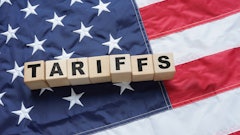
A recent survey found 61% of companies are planning to increase their investment in sustainable supply chains over the next three years. This is a major step forward for organizations increasingly aware of the urgency and significance of improving the sustainability of their supply chain operations. While there are many factors that can contribute to a more sustainable supply chain, the cold chain is seen as a key area to help accelerate the move to more sustainable operations.
While cold chain operations present sustainability improvement opportunities, it’s also important to understand the unique factors and challenges cold chain logistics face.
Preparing for challenges
Data overload. Since the onset of the COVID-19 pandemic, traditional food and pharmaceutical supply chains have been disrupted, safety requirements have become stricter, and cold chain challenges have increased. In addition to the complexities and challenges that come with all logistics operations, Cold chain operations have the compounded requirement for effective telematics data management required to ensure food safety and specialty commodity traceability. According to a survey from OpenText, 76% of those surveyed in the United States felt that information overload contributes to their daily stress. Information overload stress stems from data coming from operations software systems, sensors, and trackers. With the exponential data influx comes the inherent challenge of turning raw data into actionable plans while building a culture where data and analytics are easily accessible across the enterprise.
Cold chain fleets frequently use a variety of technologies, business systems, and vendors, each of which produce their own data formats and often duplicate content. It can be quite difficult to standardize, integrate, and harmonize data from many sources, but it’s up to business process owners to effectively consolidate and leverage disparate data sources to ensure return on integration and ongoing business process improvements. One example is the integration of multiple refrigeration unit and telematics vendors’ data feeds into a single fleet management system, with common monitoring and analytics rules and metrics to ensure total fleet visibility and standardized analysis. Another example is structured alarm handling and visibility with integrated issue identification, assignment, and escalation. This ensures scarce personnel and operations resources are focused and effective.
Visibility. Keeping track of what occurs with each vehicle and shipment of goods is another issue addressed in the cold chain sector. Monitoring vehicles, trailers, refrigeration units, and goods being transported across the cold chain is getting harder, but is increasingly essential as the global cold chain market is predicted to increase at a compound annual growth rate of 18.6% between 2023-2030. This entails ensuring each product is maintained at the proper temperature throughout the course of its transportation network. Supplier, transportation, and retail companies can accomplish total cold chain product visibility by implementing software systems and processes that use imbedded sensors to seamlessly monitor and track temperatures and time-stamped location over warehouse fixed networks and mobile transportation assets.
A shift to electric. While refrigeration is essential to maintaining the cold chain for food and pharmaceutical products, it can be energy-intensive and increase greenhouse gas emissions. With this, a constant issue is figuring out how to minimize the cold chain's negative environmental effects while ensuring handling compliance, maintaining temperature history and providing product visibility. To minimize emissions, one of the biggest changes and opportunities on the horizon for cold chain fleets is the shift to electric vehicles and refrigeration units. The evolution to fully electric cold chain fleets is slower than standard fleets due to additional infrastructure, technology, and overall expense considerations.
Many fleet management companies also consider the fact that, until batteries are large enough to hold a charge for longer distances, it might not be the most sustainable option for cold chain fleets, as this would require vehicles to sit for hours to charge with more time and effort needed to ensure perishable goods are kept safe. Investment in the right software will play a major role in creating more efficiency for electric cold chain fleets by means of recharge network planning, transportation forecasting, and fleet size projection. With this enhanced software support, businesses can forecast and plan their electric fleet migrations by knowing how many vehicles they would need to deliver a certain number of products to specific lanes and cycle times.
Opportunities to increase sustainability
Every year, around 13% of the world’s food is lost due to a lack of effective refrigeration – more than 1.6 billion tons. With the proper software and processes, cold chain operations can better avoid food spoilage (even with extreme outside temperature swings) and reduce waste.
When the cold chain is provided with the proper software to help avoid spoilage, even if temperatures change outside, this allows for reduced waste. If we continue to accept high rates of loss, food producers and suppliers will have to process more food (and therefore more waste) to keep up with demand, which will continue to have an adverse effect on the environment. Real-time digital logs, however, have made it simpler for transporters to confirm that food shipments were maintained at proper temperatures, reducing compliance concerns, and keeping within FDA safety rules.
There are also opportunities to improve sustainability with the use of cold chain fleets by encouraging more sustainable consumer lifestyles. Frozen foods can greatly reduce food waste and help consumers save money by preparing only as much as they need and providing longer shelf life. Businesses will not be able to maintain the quality, safety, and lifespan of frozen items without the assistance of optimized cold chain fleets able to support increased transportation demand.
A properly operating cold chain not only creates opportunities to increase sustainability through better food management but can also reduce medical waste. It has been estimated that more than 25% of some vaccines are wasted globally each year due to failings along the cold chain.
The solution? Enhanced software systems to more quickly and easily identify temperature exceptions and coordinate resolution resources and actions to minimize, if not eliminate, opportunities for medical waste.
It is essential for increased sustainability and global healthcare improvement to invest in cold chain infrastructure to guarantee the longevity of vaccinations and drugs, lower waste, and increase shelf life, while increasing accessibility to communities with limited resources.
Looking ahead
Innovation and technology must support the shift to more sustainable operations with less waste and now is the time for organizations to invest in and adopt improved fleet management software, sensors and processes grow their business and benefit global consumers by reducing waste, increasing efficiency and improving sustainability.




















